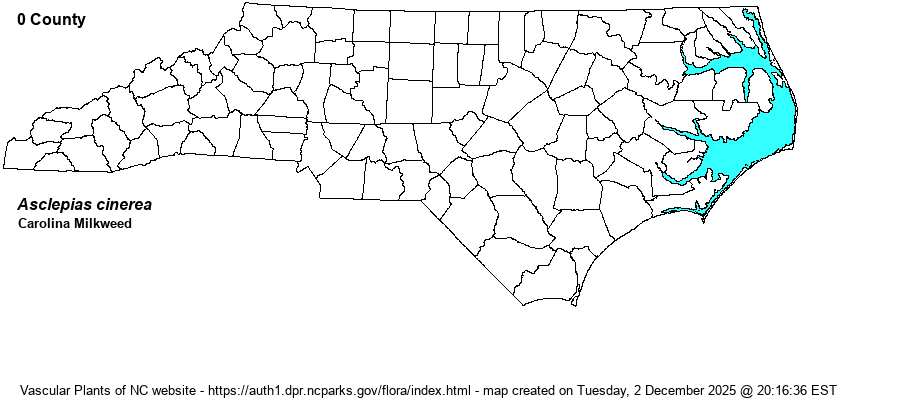| Author | Walter | |
| Distribution | The NC specimen has been determined, in 2022, to be that of Asclepias michauxii -- which is a first NC record for this milkweed. Thus, NC "loses" one milkweed but "gains" another! Oddly, this specimen was collected on June 24, 1961, with the specimen in the NCU collection, but for whatever reason the specimen and species was not included for NC on the RAB (1968) map or text as occurring in NC -- despite the fact that one of the authors (Ahles) was the collector!
This is a Deep South species, ranging currently north only to southern SC (Hampton and Jasper counties) and south to northern FL, then west to MS.
| |
| Abundance | Misidentified, and does not occur in NC. | |
| Habitat | This is a milkweed of pine savannas and other damp to wet pinelands, such as wet pine flatwoods. | |
| Phenology | Blooms from late May to July, and fruits in August and September. | |
| Identification | This very slender species grows to about 1.5 feet tall, but the scattered pairs of leaves are very narrow -- i.e., linear, each about 3 inches long but barely 1/10-inch wide. The flower clusters (umbel) are either terminal, or occasionally from upper leaf axils. Each cluster contains only a few (less than 8) flowers, and these tend to droop on curved pedicels, such that the flower is pointing outward or downward. Each flower is a pleasing soft lavender color, rare for a milkweed in the Carolinas. | |
| Taxonomic Comments | None
| |
| Other Common Name(s) | The near universal common name of Carolina Milkweed is quite misleading, and ought to be changed! The type locality, where first collected, was from Hampton County, SC. Needless to say, 95-99% of the populations likely occur outside of the Carolinas. | |
| State Rank | SRF | |
| Global Rank | G4? | |
| State Status | | |
| US Status | | |
| USACE-agcp | | |
| USACE-emp | | |

